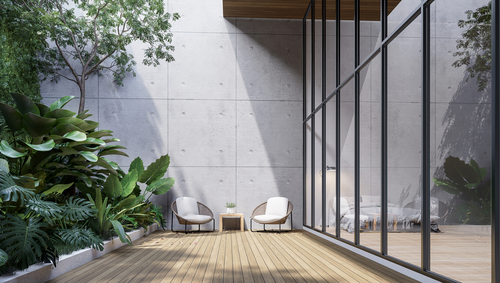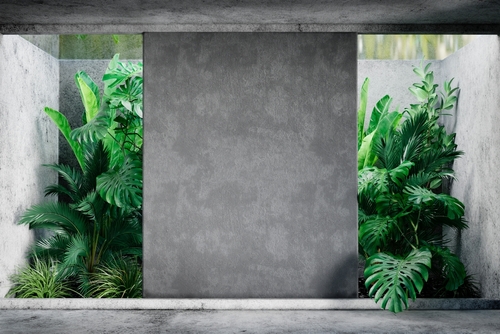
Creating a Pet-Friendly Landscape in Singapore
August 23, 2023
Landscape Renovation: Transforming Your Outdoor Space
October 6, 2023Tree and Shrub Health Assessment: Signs of Common Issues

Tree and Shrub Health Assessment Signs of Common Issues
Tree and Shrub Health Assessment: Signs of Common Issues. As the beating heart of Singapore’s urban landscape, trees and shrubs are crucial in creating a harmonious balance between nature and the built environment.
Beyond their aesthetic value, these green sentinels contribute to the overall health of urban ecosystems.
This article explores the significance of maintaining healthy trees and shrubs, recognizing signs of stress and decline, and providing effective care to preserve Singapore’s leafy legacy.
The Green Heartbeat of Urban Singapore
Singapore’s verdant cityscape is a testament to its commitment to green living. Trees and shrubs enhance the city’s beauty and provide essential ecological services such as improving air quality, offering shade and supporting biodiversity.
Understanding the Importance of Healthy Trees and Shrubs
Trees and shrubs are the foundation of urban biodiversity. They create habitats for various species, including birds, insects, and small mammals, contributing to the delicate balance of urban ecosystems.
Moreover, healthy vegetation enhances the well-being of city dwellers by providing green spaces for relaxation and recreation.
The Role of Trees and Shrubs in Urban Ecosystems

The Environmental and Aesthetic Value of Trees and Shrubs
Trees and shrubs purify the air by absorbing pollutants and releasing oxygen, thus improving the overall air quality in the city. Additionally, their aesthetic beauty enhances the visual appeal of urban landscapes.
Biodiversity and Habitat Creation in Urban Landscapes
Urban greenery provides crucial habitats for a diverse range of species, contributing to local biodiversity conservation and ensuring the survival of various flora and fauna.
The Need for Vigilant Tree and Shrub Health Monitoring
To maintain the health of trees and shrubs, it is essential to monitor their well-being regularly. Early detection of issues such as pests, diseases, and stress allows for timely intervention and effective treatment.
Recognizing Signs of Stress and Decline
Common Indicators of Tree Stress
Signs of tree stress include wilting leaves, premature leaf drop, and reduced growth. Stressed trees are more susceptible to diseases and pests, making early detection vital.
Spotting Signs of Shrub Decline
Shrubs facing decline may exhibit yellowing leaves, reduced flowering, and sparse growth. Recognizing these signs early can help prevent further deterioration.
Early Detection as a Key to Effective Intervention
Timely identification of stress and decline is crucial for implementing effective intervention strategies. Regular inspections and observant caretaking contribute to the overall health of urban greenery.
Myth – All Trees and Shrubs Look Alike
The Diversity of Trees and Shrubs in Singapore
Singapore’s landscape is characterized by a diverse range of tree and shrub species, each with its own unique characteristics, growth habits, and requirements.
Reality: Different Species, Different Needs
Acknowledging the diversity of trees and shrubs is essential for providing tailored care. Different species have varying preferences for sunlight, water, and nutrients.
Customizing Care Based on Plant Characteristics
Customized care involves understanding the specific needs of each tree or shrub species and providing appropriate conditions to support their growth and vitality.
Identifying Pest and Disease Infestations

Common Pests Affecting Trees and Shrubs
Pests such as aphids, scale insects, and caterpillars can wreak havoc on trees and shrubs, leading to defoliation and decline.
Recognizing Symptoms of Pest Infestations
Signs of pest infestations include distorted leaves, visible insects, and sticky residues. Prompt action is necessary to prevent further damage.
Implementing Integrated Pest Management Strategies
Integrated Pest Management (IPM) involves using a combination of techniques, including biological control, cultural practices, and selective pesticide application, to manage pest populations effectively.
Soil Health and Nutrient Deficiencies
The Role of Soil in Tree and Shrub Well-Being
Healthy soil provides the foundation for strong root systems and optimal plant growth. Understanding soil composition is essential for providing proper care.
Signs of Nutrient Deficiencies and Poor Soil Quality
Yellowing leaves, stunted growth, and poor flowering are indicators of nutrient deficiencies and soil quality issues.
Fertilization and Soil Amendment Practices
Applying appropriate fertilizers and soil amendments can address nutrient deficiencies and improve soil structure, promoting the overall health of trees and shrubs.
Managing Watering Practices

Myth – Watering is One-Size-Fits-All
The belief that all trees and shrubs require the same amount of water is a common misconception. Watering practices should be tailored to each species’ water needs.
Reality: Tailoring Watering to Plant Needs
Different trees and shrubs have varying water requirements based on factors such as species, age, and environmental conditions.
Preventing Overwatering and Underwatering Issues
Overwatering can lead to root rot and suffocation while underwatering causes stress and decline. Monitoring soil moisture and adjusting watering accordingly is essential.
Adapting to Singapore’s Climate
Singapore’s Tropical Climate and Plant Health Challenges
Singapore’s hot and humid climate poses challenges to tree and shrub health. Heat stress and sunburn are common issues that require attention.
Mitigating Heat Stress and Sunburn
Implementing shading, mulching, and proper watering practices can help mitigate heat stress and prevent sunburn damage.
Selecting Climate-Resilient Tree and Shrub Varieties
Choosing tree and shrub species that are well-suited to Singapore’s climate contributes to their long-term health and vitality.
Professional Assessment and Consultation

Seeking Expert Help for Comprehensive Assessments
Engaging certified arborists and horticulturists for regular assessments ensures a thorough tree and shrub health evaluation.
Myth – DIY Methods Are Always Sufficient
While basic care practices can contribute to tree and shrub health, professional expertise is essential for diagnosing and addressing complex issues.
The Value of Arborists and Horticulturists in Plant Care
Arborists and horticulturists possess specialized knowledge to identify problems, recommend treatments, and provide ongoing care.
Myth – Pruning Is Always Beneficial
The Art and Science of Pruning
Pruning involves a delicate balance between maintaining the plant’s health, shape, and aesthetics.
Proper Pruning Techniques for Different Plants
Trees and shrubs require specific pruning techniques to encourage healthy growth and minimize stress.
Over pruning Risks and Cautionary Measures
Over-pruning can weaken plants and lead to increased vulnerability to pests and diseases. Pruning should be done judiciously and with consideration for the plant’s well-being.
Cultivating a Greener Urban Future
The Collective Responsibility for Urban Greenery
Maintaining healthy trees and shrubs is a collective effort that involves collaboration between authorities, landscapers, and the community.
Encouraging Community Participation in Tree and Shrub Health
Raising awareness and involving the community in caring for urban greenery fosters a sense of ownership and responsibility.
Elevating Singapore’s Green Landscape Through Vigilant Care
By valuing and nurturing its green spaces, Singapore can ensure a vibrant and resilient urban landscape for generations to come.
FAQs:

How do trees and shrubs benefit urban ecosystems?
Trees and shrubs contribute to urban ecosystems by improving air quality, providing habitat for wildlife, reducing urban heat island effects, and enhancing the overall aesthetic and well-being of the community.
What are the signs of stress in trees and shrubs?
Signs of stress in trees and shrubs include wilting leaves, leaf discoloration, premature leaf drop, and reduced growth. These indicators may suggest underlying issues such as pest infestations, diseases, or environmental stressors.
How can I differentiate between different tree and shrub species?
Differentiating tree and shrub species involves observing their leaf shapes, sizes, colors, growth habits, and other distinguishing features. Consulting field guides, plant identification resources, and horticultural experts can also aid in accurate identification.
What are some common pests and diseases affecting trees and shrubs in Singapore?
Common pests in Singapore include aphids, scales, mealybugs, and caterpillars, while diseases like fungal infections and bacterial infections can also impact tree and shrub health.
How can I improve soil health for my trees and shrubs?
Improving soil health involves adding organic matter, balancing soil pH, and ensuring proper drainage. Regular soil testing can provide insights into nutrient levels and deficiencies, guiding appropriate amendments.
What are the best practices for watering trees and shrubs?
Water trees and shrubs deeply and less frequently to encourage deep root growth. Adjust watering frequency based on species, environmental conditions, and soil moisture levels.
How can I protect trees and shrubs from Singapore’s tropical climate?
Protecting trees and shrubs from Singapore’s tropical climate involves implementing shading, mulching, proper watering practices, and selecting climate-resilient plant species.
When should I seek professional assessment for my plants?
Seek professional assessment when trees and shrubs display persistent signs of decline, stress, pest infestations, or diseases that require specialized knowledge and intervention.
What are the dos and don’ts of pruning trees and shrubs?
Do prune to maintain plant health, remove dead or diseased branches, and shape growth. Don’t over prune, remove large branches without proper technique, or prune during active growth periods.
How can individuals contribute to maintaining healthy urban trees and shrubs?
Individuals can contribute by practicing responsible gardening habits, reporting signs of stress or decline to authorities, participating in community tree-planting events, and supporting initiatives that prioritize urban greenery.
Tree and Shrub Health Assessment: Signs of Common Issues – Conclusion

Preserving trees and shrubs goes beyond aesthetics; it is a commitment to the health and sustainability of Singapore’s environment.
With vigilance, knowledge, and community involvement, the leafy legacy of Singapore will continue to flourish, enriching the lives of its inhabitants and enhancing the city’s urban allure.
Are you seeking a professional and reliable landscape contractor in Singapore? Contact us today!



